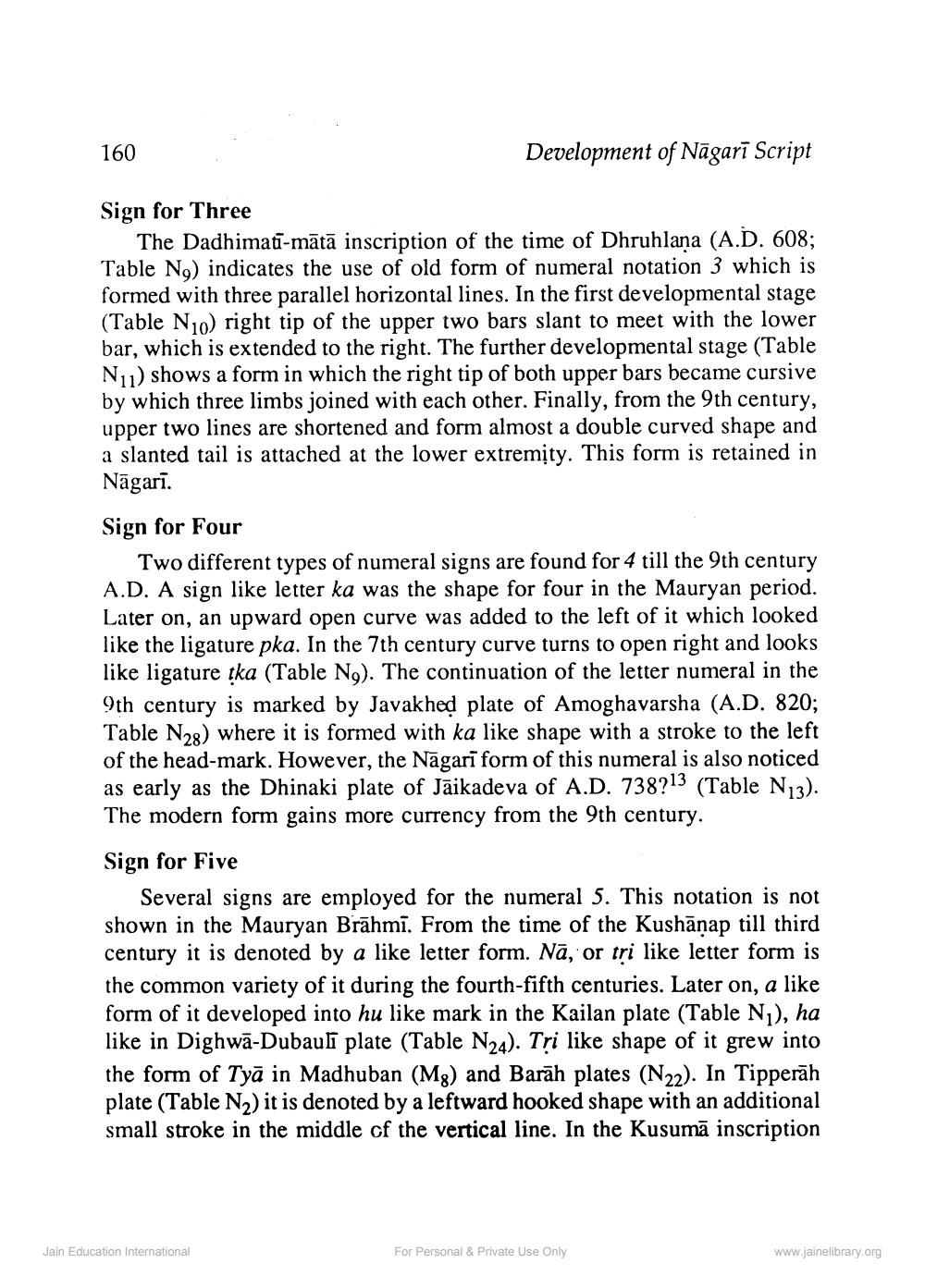________________
160
Development of Nāgarī Script
Sign for Three
The Dadhimati-mātā inscription of the time of Dhruhlana (A.D. 608; Table No) indicates the use of old form of numeral notation 3 which is formed with three parallel horizontal lines. In the first developmental stage (Table N10) right tip of the upper two bars slant to meet with the lower bar, which is extended to the right. The further developmental stage (Table Nu) shows a form in which the right tip of both upper bars became cursive by which three limbs joined with each other. Finally, from the 9th century, upper two lines are shortened and form almost a double curved shape and a slanted tail is attached at the lower extremity. This form is retained in Nāgarī.
Sign for Four
Two different types of numeral signs are found for 4 till the 9th century A.D. A sign like letter ka was the shape for four in the Mauryan period. Later on, an upward open curve was added to the left of it which looked like the ligature pka. In the 7th century curve turns to open right and looks like ligature tka (Table Ny). The continuation of the letter numeral in the 9th century is marked by Javakhed plate of Amoghavarsha (A.D. 820; Table N28) where it is formed with ka like shape with a stroke to the left of the head-mark. However, the Nāgarī form of this numeral is also noticed as early as the Dhinaki plate of Jāikadeva of A.D. 738?13 (Table N,3). The modern form gains more currency from the 9th century.
Sign for Five
Several signs are employed for the numeral 5. This notation is not shown in the Mauryan Brāhmi. From the time of the Kushānap till third century it is denoted by a like letter form. Nā, or tri like letter form is the common variety of it during the fourth-fifth centuries. Later on, a like form of it developed into hu like mark in the Kailan plate (Table N), ha like in Dighwā-Dubaulī plate (Table N24). Tri like shape of it grew into the form of Tyā in Madhuban (Mg) and Barāh plates (N22). In Tipperāh plate (Table Ny) it is denoted by a leftward hooked shape with an additional small stroke in the middle of the vertical line. In the Kusumā inscription
Jain Education International
For Personal & Private Use Only
www.jainelibrary.org




